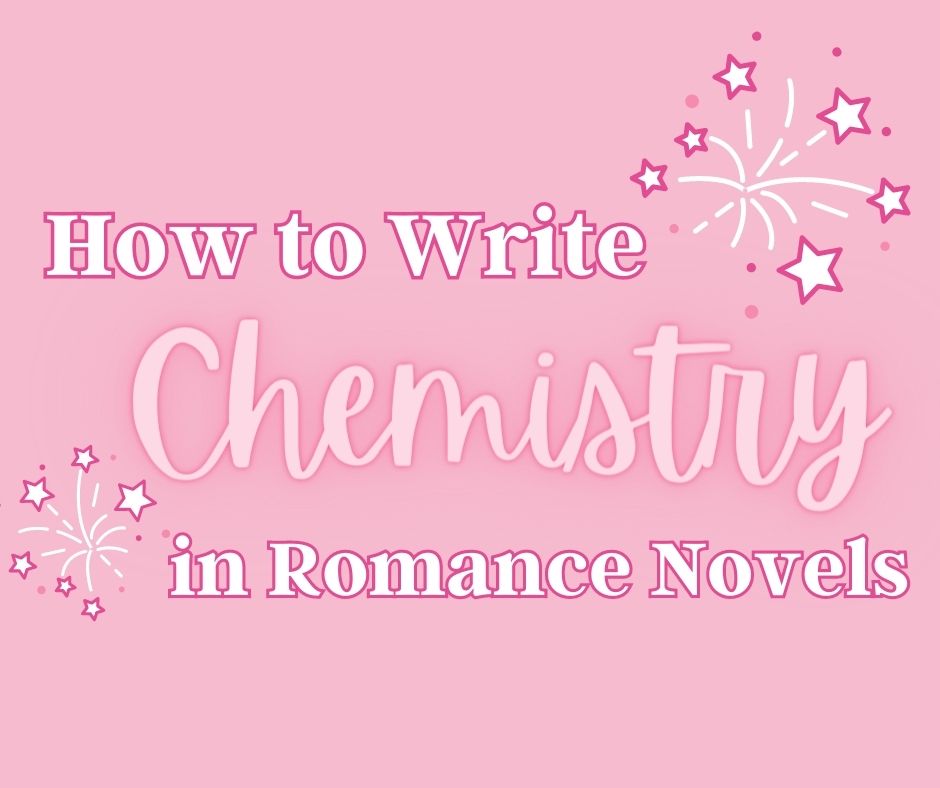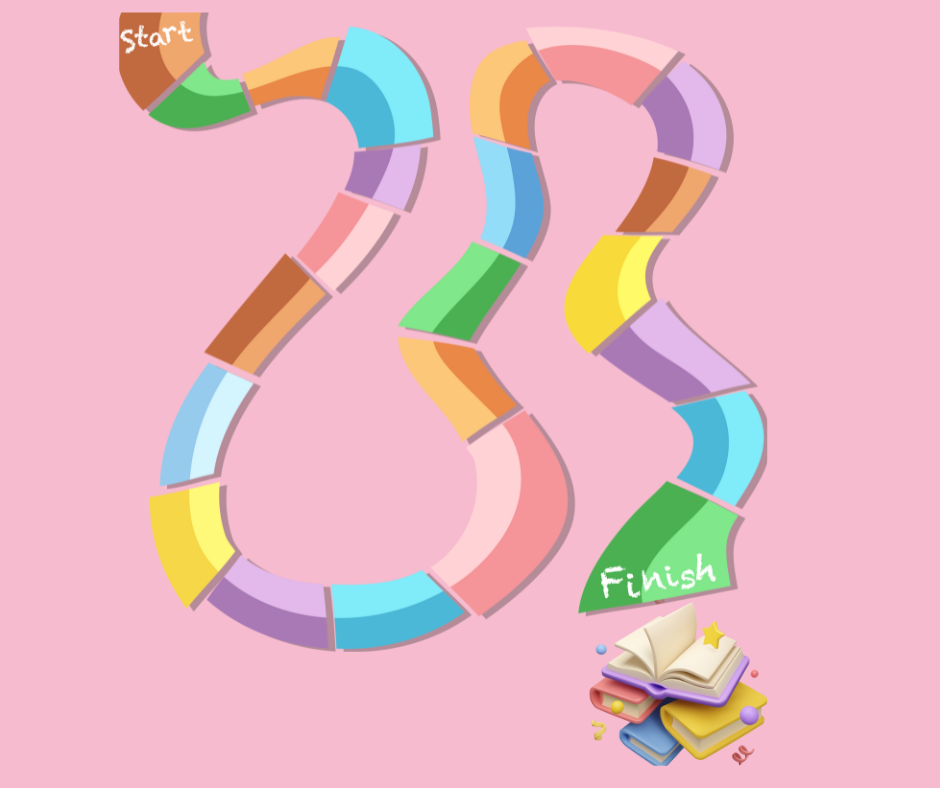Writing Chemistry in Romance

Updated August 2023
What makes romance fiction so popular? At it’s essence, its the rollercoaster ride of falling in love. But for readers to love a romance, they need to feel the snap, crackle, and pop between the characters…in other words, chemistry.
Read text version below video:
What is Chemistry?
In my mind, chemistry is like porn…it’s hard to describe, but you know it when you see it.
Chemistry doesn’t necessarily mean lust. Think of buddy-cop movies in which the actors worked well together. That intangible essence that audience members feel between them is chemistry.
I grew up enjoying a show called Hart to Hart about a sleuthing couple played by Robert Wagner and Stefanie Powers. While they may not have been the best actors in the world, they were more than the sum of their parts in that show. Their chemistry made the show the success that it was. Any other combination of actors in those parts wouldn’t have been as good as the two of them together.
The opposite of this is the movie The Thomas Crown Affair. Both Pierce Brosnan and Rene Russo are fine actors. Rene had really good chemistry with Mel Gibson in Lethal Weapon. But Pierce and Rene didn’t have it in The Thomas Crown Affair (in my opinion).
So what is chemistry? It’s the palatable electric current that sizzles between two characters.
Again, this doesn’t necessarily mean lust. In sweet romances that don’t have any sensuality or touching, readers need to feel the connection between the couple even if they’re not holding hands, kissing, or having sex.
Stages of Romantic Chemistry
I’ve mentioned that chemistry isn’t lust, although that can be a factor. In a romance novel, chemistry may start at the lust or attraction level, but to reach and HEA, it needs to evolve.
Physical Attraction: This probably needs no explanation, but it’s basically lust. Two people find the other sexually appealing. In many romances, the connection between the characters starts at this.
Personal Attraction: This attraction is something that evolves as the characters get to know each other on a deeper level. Friends to lovers romance often start at this level. Or it can develop, as in the case of enemies to lovers. In my book, Drawn to Her, Lexie learns that her first impression of Drake isn’t who he really is. As she discovers that he has compassion for those wh0 work for him, her personal attraction and respect for him grows.
Emotional Attraction: Essentially this is love, but it speaks to a connection that is soul deep. This is the end goal in a romance novel.
What sort of Chemistry Do Your Characters Need?
By the end of your book, your characters should have all three of the above attraction levels. At the beginning, they usually have one or two. If there are all three in the opening, it’s generally one-sided, such as a man who’s in love with his neighbor but believes she just sees him as a friend. She of course can think the same about him. Or not.
In sweet romance, you won’t have the physical attraction of lust, but there should still be a physical, non-sensual pull. Holding hands. Pushing a tendril of hair away from the partner’s face. Even a little kiss.
Writing Chemistry
This is where things get tricky in a romance because chemistry can be difficult to describe. Many novice writers tend to use telling to illustrate chemistry. “He was hot and she wanted him.” Or they’re too technical, writing details of tab A inserted into slot B during a sexy bit.
Here are things to consider when writing intimacy and sexy bits in your romance.
Successful chemistry is shown through the senses.
Romance works when it taps into emotions and sensations. In spicier romance or erotica, those sensations include titillation, but even in sweet romance, the reader needs to feel the swoon and pitter patter of the heart. This is best done by using the senses; sight, sound, touch, scent, taste.
When it comes to writing chemistry or even just emotion, I always ask:
What does that look like and feel like?
For example, what does lust look and feel like (beyond arousal)? Flushed cheeks? Hot skin?
What does pain and heartache look and feel like?
What does love look and feel like?
Here’s a few examples:
Drawn to Her (by Jenna Harte): When Lexie first meets Drake, she immediately notices that he’s attractive, yet dark and broody. But when she confronts him, there’s an extra little zing. Here we have a hint of physical attraction.
“You have some nerve.” She poked him in the chest with her index finger, ignoring the jolt of heat zapping her each time she felt the hard, firm muscle underneath his starched white shirt.
Here is Drake’s side of their encounter:
Having to ask her permission didn’t annoy him as much as the way he’d been caught off guard by her brazenness and how her emerald eyes stared into the depths of his soul when she challenged him.
You’ll note that in both cases, neither is thinking about getting naked, but there is something there that unsettles them both.
Something in the air changed described as electricity or heat, but none of them recognize what it really means. Lexie acknowledges that Drake is handsome, but he’s insufferable, so her attraction to him is tempered by that.
Of course, if you’re writing a spicy romance, you might take things up a notch. Whereas the characters above didn’t recognize or acknowledge those first sensations, you could have your characters right off the bat know they lust for the other person.
The point is, at the time our characters are coming together in the book (even if they’ve known each other in the past) there should be a something-something, a je ne sais quoi that sizzles or crackles in the air. Even in sweet romance, we need to feel there is a connection, a pull between the two, even if it’s not sensual.
Remember there are five senses. You don’t have to use them all at the same time, but be sure to mix them up. Stolen glances (sight). Light brush of fingers (touch). Laughter (sound). Perfume (scent). Wine on the lips (taste).
Here are a few examples from Risk It All
Sensation and Scent
“You can make it up to me with a dance.” He steps closer. Close enough I can feel the heat of his body and inhale the scent of his cologne.
My body says, yum, but my brain tells it to shut up. “I don’t want to dance.”
Touch and Scent
My hand gently presses against her back to pull her closer. God, she smells divine. A mix of sweet and exotic. I’m nearly drunk with it.
Create Chemistry with Dialogue
I love great banter, but dialogue doesn’t necessarily need to be witty to express chemistry. Here are different ways you can use dialogue to boost chemistry.
Banter (teasing or playful Dialogue
Witty or flirtatious exchanges act as an unspoken dance between characters. They show that the characters are attuned to each other and hint at a growing familiarity.
Example:
I tilt my head up slightly, bringing my lips closer to his. “If you wanted to kiss me, I’d be okay with that.”
His lips twitch upward. “There’s no doubt that I want to kiss you. But I’m not a one-night-kiss kind of guy, and you’ve made it clear that there will be no dates when this adventure is over.”
“What are you talking about? I spent the evening with you eating exotic Nigerian cuisine. We’re standing on a moonlit terrace. It has all the hallmarks of a date.”
His smile is fast and wide, and so breathtakingly handsome. “You’ve got a point.” He leans in closer, but not close enough. “You’ll still respect me in the morning, won’t you?”
“Let’s see how well you kiss first.”
Deep Conversations
Beneath the surface of light-hearted banter, deeper currents flow to anchor the relationship. It’s these moments that drive the chemistry from a surface level to the personal and emotional levels. This goes beyond recounting past traumas or hopes for the future; it’s about the raw honesty and vulnerability that comes with it. When one character reveals their fears or ambitions, it’s an invitation for the other character to see the depth of their soul. It’s in these vulnerable moments that the bond between our love birds solidifies, and readers find themselves deeply invested in the characters’ journey together.
Miscommunications
Misunderstandings and miscommunications provide the necessary bumps on the road, adding layers of tension and longing. Maybe it’s an overheard conversation taken out of context, a message left undelivered, or words spoken in the heat of the moment—these blunders drive a wedge, however temporary, between the characters. They evoke a sense of yearning, and also set the stage for redemption.
Proximity to Create Chemistry
There’s a reason why the trope of two characters stuck in close quarters is popular. While we need reasons in a romance for our characters to continue to be around each other, physical proximity sets a stage for fireworks. Forced proximity includes places like a stuck elevator, snowed in at a cabin, becoming roommates, sharing an office, a road trip, etc. Being forced together accelerates the intimacy. With no escape from each other’s presence, every movement and breath is magnified. The constraints of the situation force them to navigate the budding or existing tension, making for deliciously awkward or profoundly intimate scenes. It’s in these closed spaces that barriers break down, conversations deepen, and true feelings often rise to the surface.
Use Anticipation to Create Chemistry
Remember the ketchup commercial that used the song Anticipation? You can build tension and chemistry using the same idea. Ways to build this anticipation include:
Slow Down Time
On TV and movies, we often see this as the long lingering gaze. The slow drawing together for a kiss. Even in scenes in which the couple collide in a fast, furious frenzy, you can slow down the moments before to increase the tension and anticipation of what’s to come. You can draw out these moments by focusing on the sensory elements.
From Risk It All
The air grows thick. Need sizzles over my skin. With one look, he has me wanting in a way I’ve never wanted before. He’s like a Svengali, except he isn’t trying to manipulate or exert control over me. No, his gaze shows genuine desire, hunger, and it ignites my own.
Keeping his gaze on my eyes, he takes my glass, and sets it down next to his. I know what’s coming and anticipation slides down my spine. He frames my face with his hands, pulling me to him. The only time his gaze leaves mine is when it drifts down to my lips. Then it travels back up, looks into my eyes.
But he doesn’t take the next step. I’m dying for more so why isn’t he kissing me? I realize he’s waiting. He wants me, I have no doubt about that. But he isn’t going to take, not without my giving him a signal that I want him too. It’s one of the things that makes him different from other men.
Slow Burn
There’s an undeniable allure to the slow unfolding of romance. By delaying the inevitable connection, authors can cultivate a deep, smoldering chemistry that keeps readers on the edge of their seats. It’s in the stolen glances across crowded rooms, the nights spent talking until dawn, the tentative touches that don’t cross boundaries yet hint at the possibility. A slow burn romance is a masterclass in patience, where every interaction is charged with a quiet intensity, and the eventual culmination feels like a sweet release.
Interrupted Moments
Frustrating but effective are the moments that interrupt growing tension. Just when characters are about to bridge the gap between them, an unexpected phone call, a sudden downpour, or a nosy friend bursts onto the scene, leaving both them and the readers yearning for more. These moments of pause can be frustrating, but they’re also exhilarating. They serve to heighten the stakes, make the eventual connection all the more satisfying, and remind readers that love, much like life, is unpredictable.
Internal Conflicts
The most powerful barriers to romance often aren’t external but reside within the characters themselves. Fears of vulnerability, past traumas, or worries about jeopardizing other areas of life (friendships, job, etc) can create internal battles that keep lovers apart. These struggles add depth to the narrative, making readers empathize with the characters and root for them even more. The ‘will they, won’t they’ tension becomes a gripping saga, not just of love, but of personal growth and overcoming inner demons.
Chemistry in Sexy Bits
Remember, that chemistry is the palatable sizzle (not titillation) between the couple. It’s important for writers to realize this because sex can’t do all the heavy lifting to get to an emotional bond between our lovers. Chemistry can be built using intimate bits, but these bits aren’t automatically filled with chemistry.
The best sexy bits use many of the elements already mentioned above…senses, anticipation, banter…
Here are a few things to consider when writing sex scenes:
Serves a Purpose
You need to have a reason for an intimate bit beyond titillation (unless you’re writing erotica). Like all other scenes in the book, a sexy scene needs to have a purpose. It needs to drive the story forward or reveal something about the characters.
Less Is Usually More
Don’t be verbose. Consider the words of short story writer and poet Raymond Carver, “Get in, get out. Don’t linger. Go on.” Okay, so in a sexy bit, you want to linger a little bit, but the point is, don’t fill up the scene with adverbs and flowery language, or technical aspects of the deed. Focus on the senses, emotions and thoughts that romance readers crave. Remember the scene needs to serve a purpose to the story or characters.
In Risk It All, the first time Max and Madeleine are together, it’s a release not just from the attraction they’ve been denying, but also a celebration that they’re alive after an ordeal in the jungle. Later, they have sex again, but this time, Max is grappling with the reality that once they go home, he won’t see her again. This becomes a problem because he realizes he loves her.
Once I catch my breath, I lift my head to stare down into her amber eyes and my heart clinches hard. Jesus. This has to be love.
Don’t Write a Play-By-Play
This is a rehash of what I’ve already said, but said in a different way. In this case, I’m not saying you can’t describe what’s physicality happening, but focusing on the moves (tab a into slot b) isn’t sexy. Titillation comes from the brain, which requires more than play-by-play of who’s touching who where. Sensations (touch, scent), emotions, and thoughts (Is this love? Is this wrong? etc) enhance what’s going on in an intimate bit. Some of the sexiest or most emotionally satisfying sensual scenes I’ve ever read had very little in the way of the who was touching who when and where.
Watch Out for Hilarious Euphemisms
My favorite sexy euphemism is throbbing love thruster. I think it’s hilarious!
Why do romance writers use euphemisms? Basically, they’re used to avoid write body part words.
Why? Sometimes it’s because it can sound clinical. Other times it’s from embarrassment. Sometimes it’s to offer a softer language. Whatever the reason, if you’re not going to use the true word body parts, watch that you don’t choose words or phrases that will make the reader snicker when they’re supposed to be swooning.
To be honest, this can be a little subjective. I think we can all agree that throbbing love thruster won’t work. But flower of her femininity? I wouldn’t use it, but others do.
Also consider your characters and their attitudes toward sex and the language they’d use. Would a woman refer to her breasts as boobies or breasts or tits? How would your male character refer to them? His choice of words can indicate something about his character. If he calls them jugs, that says something about him, right?
Make Sure It Fits the Mood/Goal of the Scene
If you’ve done your job and your intimate bit is a necessary scene for the book, then like all other scenes it will have a purpose and mood. Sex isn’t just sex. Sometimes it’s fun and playful. Sometimes it desperate. Sometimes is fast and furious. Sometimes it’s like a lazy Sunday morning. Sometimes it’s “dirty” and other times is making love. However you write your sexy or sensual bit, it should fit with everything else that’s going on. This doesn’t just apply to the actual choreography of the scene, but the feelings and thoughts experienced by the couple.
For example, if the couple has hit the limit of sexual tension and can’t stand it anymore, but they’re also enemies, their encounter isn’t likely to be slow, romantic, or playful (though it could be funny…ala in a romcom).
When they’re finally admitting they’re in love, even if it’s only to oneself, the intimacy will be slower. It can still be intense, but it will be more emotional.
If you want to increase your sexy-bit vocabulary, check out the Other Ways to Say spreadsheet, which has a section on sexy words. This resource is free to WWH members. Visit the Freebies Page to access it.






Responses